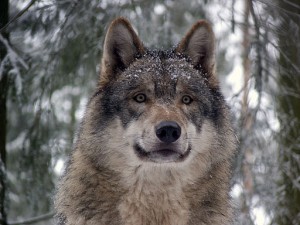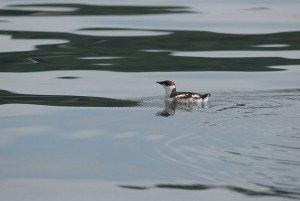Population Decline of the Northern Spotted Owl
A combination of climate change and habitat loss caused a range wide decline of nearly 4% per year between 1985 and 2013.

Northern spotted owls are declining in all parts of their range in the Pacific Northwest of the USA, a new study reports. The barred owl, an invasive species, is out-competing them for space, food and habitat. This has, in combination with climate change and habitat loss, caused a rangewide decline of nearly 4% per year between 1985 and 2013.
The study, published in The Condor, was conducted by a team of 37 researchers who analysed data from 11 study areas that represented 9% of the owl’s range. Throughout the study, field crews observed how many owls inhabited different territories, and noted the yearly survival and reproductive success of certain banded owls. They discovered that since monitoring of spotted owl populations began, they have declined by 55-77% in the state of Washington, 31-68% in Oregon and 32-55% in California. Some of these declines are now occurring in areas in southern Oregon and northern California that had not been experiencing a decline before 2009.
There was one small area in California where long-term population declines were only 9%. This is an area where Barred owl removal has taken place since 2009. Spotted owl populations and survival rates have increased since these began. Dr. Katie Dugger, a research biologist at the USGS Oregon Cooperative Fish and Wildlife Research Unit, Oregon State University and lead author on the report, said: “This study provides strong evidence that barred owls are negatively affecting spotted owl populations. The presence of barred owls was associated with decreasing spotted owl survival rates in some study areas and spotted owls were disappearing from many of their historical breeding territories as those areas were invaded by barred owls.”
The relationship between spotted owl populations and climate was found to be complex and variable, but the results of the study suggests that survival of young birds and their ability to become part of the breeding population increased when winters were drier. This may be a problem for the spotted owls in future, as climate change predictions indicate that winters in the Pacific Northwest will become warmer and wetter.
Habitat loss in the region may also be a factor in the survival of spotted owls. Although northern spotted owls do occur in young forests in some parts of their range, they are most strongly associated with old-growth forests. The US Fish and Wildlife Service has already listed the species as threatened (in 1990) because of the decline of old-growth forest habitat. Dr. Dugger adds: “The amount of suitable habitat required by spotted owls for nesting and roosting is important because spotted owl survival, colonisation of empty territories, and number of young produced tends to be higher in areas with larger amounts of suitable habitat.”





One Comment
Wonderful Article. This information helped me a lot in my ecosystems assignment, and I hope that you write more! Thank you!